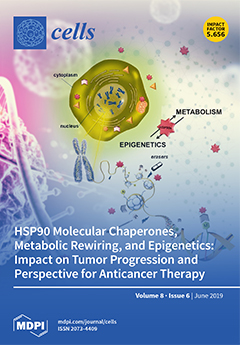Osteoclast-mediated bone destruction is amplified in the hypoxic synovial microenvironment of rheumatoid arthritis (RA). This increased bone resorption is driven by the hypoxia-inducible transcription factor HIF. We identified hypoxic induction of the HIF-regulated adenosine A
2B receptor in primary human osteoclasts (mRNA, 3.8-fold
[...] Read more.
Osteoclast-mediated bone destruction is amplified in the hypoxic synovial microenvironment of rheumatoid arthritis (RA). This increased bone resorption is driven by the hypoxia-inducible transcription factor HIF. We identified hypoxic induction of the HIF-regulated adenosine A
2B receptor in primary human osteoclasts (mRNA, 3.8-fold increase,
p < 0.01) and sought to identify the role(s) of purinergic signaling via this receptor in the bone resorption process. Primary human osteoclasts were differentiated from CD14+ monocytes and exposed to hypoxia (2% O
2) and A
2B receptor inhibitors (MRS1754, PSB603). The hypoxic increase in bone resorption was prevented by the inhibition of the A
2B receptor, at least partly by the attenuation of glycolytic and mitochondrial metabolism via inhibition of HIF. A
2B receptor inhibition also reduced osteoclastogenesis in hypoxia by inhibiting early cell fusion (day 3–4,
p < 0.05). The A
2B receptor is only functional in hypoxic or inflammatory environments when the extracellular concentrations of adenosine (1.6-fold increase,
p < 0.05) are sufficient to activate the receptor. Inhibition of the A
2B receptor under normoxic conditions therefore did not affect any parameter tested. Reciprocal positive regulation of HIF and the A
2B receptor in a hypoxic microenvironment thus enhances glycolytic and mitochondrial metabolism in osteoclasts to drive increased bone resorption. A
2B receptor inhibition could potentially prevent the pathological osteolysis associated with hypoxic diseases such as rheumatoid arthritis.
Full article






